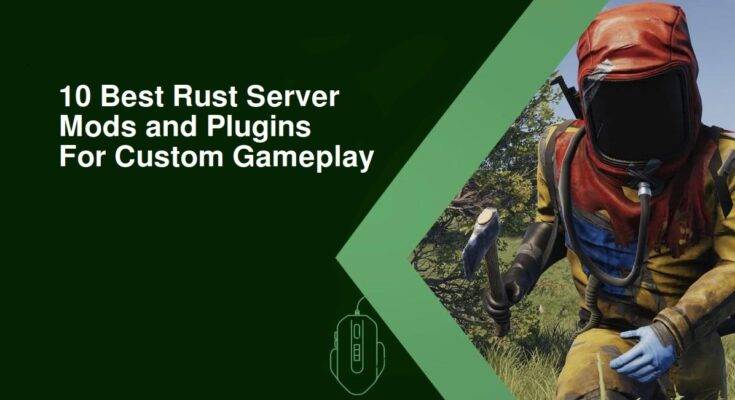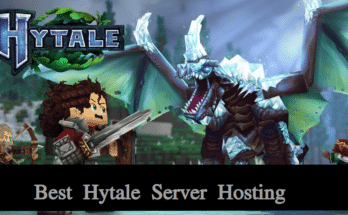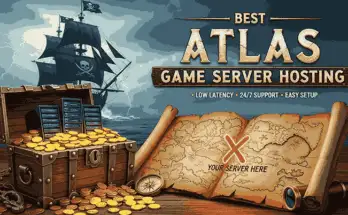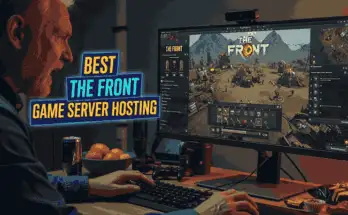Rust is all about survival, but for server owners, it’s also about customization. If you’re hosting your own Rust server, mods and plugins are what turn a basic vanilla world into a vibrant, unique experience. Whether you want to build a PvE playground, add custom shops, reward loyal players, or create teleport zones and safe havens, Rust server mods give you full control over the gameplay.
These enhancements are made possible through uMod (formerly known as Oxide), the most popular modding platform for Rust. With uMod, you can install hundreds of free, community-developed plugins to shape your server exactly how you want it.
In this guide, we’ve handpicked 10 of the best Rust server mods and plugins to help you create a custom experience your players won’t forget. Whether you’re hosting a casual world for friends or building a large public community, these plugins will improve gameplay, boost retention, and make server management easier.
Let’s dive in.
Table of Contents
How to Use This List
If you’re new to Rust server customization, don’t worry—this list is beginner-friendly and practical. Each plugin listed below includes:
✅ What the plugin does – So you can quickly decide if it’s right for your server
🎯 Best use cases – Suggestions for the type of server or community it’s ideal for
🔧 Setup difficulty – How easy or complex it is to install and configure
📌 Download/source link – So you can grab it straight from uMod.org
All plugins on this list are compatible with uMod (Oxide) and work with both local and hosted Rust servers that support modding.
👉 Pro Tip: Start with just 2–3 plugins and test thoroughly before adding more. Some plugins depend on others, and running too many can impact performance.
📌 Need help with installation? Check out our guide: How to Set Up uMod on Your Rust Server
1. Kits
✅ What it does:
The Kits plugin allows you to create custom loadouts that players can claim using chat commands like /kit starter or /kit vip. You can assign cooldowns, usage limits, permissions, and even auto-assign kits on first join.
🎯 Best for:
PvP servers (starter gear kits)
VIP/donor perks
New player support
Event rewards
🔧 Setup difficulty:
Moderate – Requires editing a configuration file or using in-game commands to define kits. Permissions must be granted via uMod’s permission system.
📌 Download: https://umod.org/plugins/kits
🧠 Pro Tip:
Use permission groups (e.g., vip, admin, default) to limit which kits each player can access. Combine with the Economics or ServerRewards plugin to make players buy kits with in-game currency.
2. Teleportation (TPR + Home)
✅ What it does:
The NTeleportation plugin adds teleportation commands to your server, allowing players to:
Request teleports to other players using
/tpr <name>Set home locations with
/sethomeand return using/homeUse admin-level commands like
/tpfor instant movement
🎯 Best for:
Large map servers
PvE or roleplay communities
Reducing travel time and improving quality of life
Admin tools and event control
🔧 Setup difficulty:
Easy to Moderate – Simple to install, but some configuration may be needed to set teleport cooldowns, limits, and permissions.
📌 Download: https://umod.org/plugins/nt-teleportation
🧠 Pro Tip:
Limit the number of homes and require cooldowns to keep teleportation balanced on PvP servers. Use permission groups (default, vip, etc.) to grant extra homes or shorter cooldowns to supporters.
3. Economics + ServerRewards
✅ What they do:
These two plugins work together to create a fully functional in-game economy.
Economics adds a virtual currency system to your server.
ServerRewards lets players earn points for actions like killing NPCs, gathering resources, or staying active then spend those points in a reward store.
Players can check their balances, receive payouts, and buy items through command-line or GUI-based shops.
🎯 Best for:
PvE or PvP servers with progression mechanics
Rewarding active players or donors
Roleplay and community servers with shops
Event-based gameplay or faction systems
🔧 Setup difficulty:
Advanced – Requires setting up permissions, configuring rewards and currency values, and possibly integrating a GUI shop.
📌 Downloads:
🧠 Pro Tip:
Combine this system with the GUI Shop plugin to create a visual store interface for players. You can also link it to specific in-game actions, like killing animals or completing objectives.
4. GUI Shop
✅ What it does:
GUI Shop adds a sleek, interactive in-game store interface where players can spend virtual currency (from the Economics or ServerRewards plugins) to purchase items like weapons, resources, tools, and kits.
Players simply type /shop to open the menu and start shopping—no chat commands or guesswork needed.
🎯 Best for:
PvE servers with in-game economies
Roleplay and survival servers
Rewarding active players and donors
Fully custom trading systems
🔧 Setup difficulty:
Moderate – Requires configuring shop categories, item IDs, prices, and linking to the correct currency plugin (Economics or ServerRewards).
📌 Download: https://umod.org/plugins/gui-shop
🧠 Pro Tip:
Use permission groups to offer different items or discounts for VIP players. Keep your shop balanced by avoiding too many high-tier weapons unless you’re running a PvP-heavy server.
5. Better Chat
✅ What it does:
Better Chat gives you full control over the in-game chat system. You can customize player name colors, add role tags (like [Admin], [VIP]), and create rich formatting that makes your chat look clean and professional.
It supports color codes, permission-based formatting, and integration with other plugins like Kits, Clans, or Friends.
🎯 Best for:
Community and roleplay servers
Servers with VIP tiers or ranks
Creating a clean, branded server identity
Making admins/mods easily identifiable in chat
🔧 Setup difficulty:
Easy to Moderate – Configuration is done via a JSON file. You’ll define roles, colors, and prefixes based on permission groups.
📌 Download: https://umod.org/plugins/better-chat
🧠 Pro Tip:
Combine Better Chat with the Permissions and Kits plugins to create distinct experiences for different player groups. For example, [VIP] John with gold-colored text and access to special kits.
6. Info Panel
✅ What it does:
Info Panel adds a sleek heads-up display (HUD) to the top or bottom of the screen. It can show useful real-time info like:
Player count
Server time
Current coordinates
Online admins
Your Rust server’s name or description
It helps players stay informed without typing commands or opening the map—perfect for both immersion and usability.
🎯 Best for:
PvE and roleplay servers
New player onboarding
Servers that want a polished, modern look
Community-focused servers with uptime/players displayed
🔧 Setup difficulty:
Easy – Install and restart your server. You can enable/disable panels in the config file, choose positions, and adjust what info is shown.
📌 Download: https://umod.org/plugins/info-panel
🧠 Pro Tip:
Pair Info Panel with plugins like ServerInfo, Player Ranks, or Zone Manager to build a fully interactive and informative user experience for your players.
7. Zone Manager
✅ What it does:
Zone Manager lets you create fully customizable zones on your Rust map with unique rules. For example, you can set up:
Safe zones (no PvP or raiding)
No-build areas (around monuments or spawn points)
No-decay regions
Flying-only admin zones
Custom messages when players enter or leave zones
You define zones using coordinates or with tools like /zone_add, making it highly flexible for both gameplay and admin tasks.
🎯 Best for:
PvE servers
Roleplay hubs or trader zones
Event arenas or mini-games
Admin-exclusive areas or war zones
🔧 Setup difficulty:
Moderate to Advanced – Zones can be set using commands or manually via config. Understanding flags and permissions is key to customizing properly.
📌 Download: https://umod.org/plugins/zone-manager
🧠 Pro Tip:
Use with NoDecay, PvP Toggle, or AutoEvents to create themed areas (like battlegrounds, peaceful hubs, or special event islands). You can even assign different music or loot rules per zone using integrations.
8. No Decay / Custom Decay
✅ What it does:
The NoDecay plugin allows you to disable or control how fast structures decay on your Rust server. You can disable decay globally, limit it to certain building types (e.g., twig, wood), or use it in combination with Zone Manager to apply custom decay rules to specific areas.
This is incredibly useful for creative servers, PvE worlds, or any community that wants to protect player bases from disappearing.
🎯 Best for:
PvE and build-friendly servers
Creative mode or roleplay servers
Custom zones like arenas or safe havens
Servers that want long-term player builds to persist
🔧 Setup difficulty:
Easy – Configuration is done via a single JSON file with toggle options. Works immediately after install.
📌 Download: https://umod.org/plugins/no-decay
🧠 Pro Tip:
If you want a more balanced approach, consider combining this with BuildingGrades or Upkeep Disabler to fine-tune decay based on building material or player status.
9. AutoDoors
✅ What it does:
AutoDoors automatically closes doors after a set amount of time—helping players avoid one of Rust’s most common mistakes: leaving doors open and getting raided.
You can configure different timers for single, double, or garage doors, and players can toggle the feature on or off using the /ad command.
🎯 Best for:
PvP and raiding-heavy servers
Beginner-friendly or training servers
Quality-of-life improvement for all player types
Reducing base vulnerability
🔧 Setup difficulty:
Very Easy – Install, restart the server, and it works out of the box. Optional tweaks can be made in the config to change timers or default behavior.
📌 Download: https://umod.org/plugins/autodoors
🧠 Pro Tip:
Use permission groups to give VIP players the ability to customize their auto-close timers. You can also disable it for certain doors if needed, using plugin flags.
10. Rust:IO Clans / Friends API
✅ What it does:
The Clans and Friends plugins let players create and manage social groups on your server. With these plugins, players can:
Form clans or friend lists
View allies on the Rust:IO live map
Avoid friendly fire (with plugin integrations)
Share sleeping bags, turrets, doors, and tool cupboards more easily
These tools greatly enhance team play and help prevent accidental griefing among allies.
🎯 Best for:
Team-based or faction servers
Roleplay or community-based gameplay
Reducing confusion in PvE or large events
Any server using Rust:IO for map tracking
🔧 Setup difficulty:
Moderate – Installation is simple, but integration with Rust:IO and other plugins like FriendlyFire or BetterChat may require permission setup and testing.
📌 Downloads:
🧠 Pro Tip:
Use Better Chat to automatically show clan tags in player names. Pair with Zone Manager to create clan-controlled territories or safe zones.
How to Install Rust Plugins
Installing Rust plugins is straightforward once your server is set up with uMod (Oxide). Whether you’re self-hosting or using a compatible hosting provider, follow these steps to get your plugins up and running:
📥 Step-by-Step Plugin Installation Guide
Download the Plugin (.cs File):
Visit the plugin’s uMod.org page and click Download to get the.csfile.Access Your Server Files:
Use FTP (e.g., FileZilla) or your host’s file manager to browse your server directory.Navigate to the Plugins Folder:
Go to:
/oxide/plugins/ 4. Upload the Plugin File:
Drag and drop the .cs file into the /plugins/ folder.
5. Restart or Reload the Server:
⚠️ Tips for a Smooth Install
✅ Always back up your server before adding new plugins
✅ Test one plugin at a time to catch errors early
❌ Avoid renaming
.csfiles—uMod uses the filename to load the plugin🔧 Use the command
/pluginsin-game or via console to see installed plugins
📌 Need help setting up uMod? Follow our guide: How to Set Up a Modded Rust Server
Conclusion
Custom mods and plugins are what transform a basic Rust server into a truly unique experience. Whether you’re building a friendly PvE environment, running a competitive PvP battlefield, or launching a thriving roleplay community, the right set of plugins can elevate your gameplay, reduce admin workload, and keep your players coming back for more.
In this guide, we’ve covered 10 of the best Rust server plugins, ranging from quality-of-life tools like AutoDoors to game-changing systems like Kits, Teleportation, and GUI Shops. Each plugin offers something valuable, whether you’re focused on survival mechanics, player interaction, or server economy.
🧠 Final tips:
Start small: install 2–3 core plugins, test them, and build from there
Always keep backups before making big changes
Use permission groups to manage access and avoid plugin conflicts
Don’t be afraid to experiment—Rust modding is incredibly flexible!
📌 Next steps:
🔧 How to Set Up a Modded Rust Server with uMod
🎮 Customize your world. Control the rules. Build a better Rust experience.




